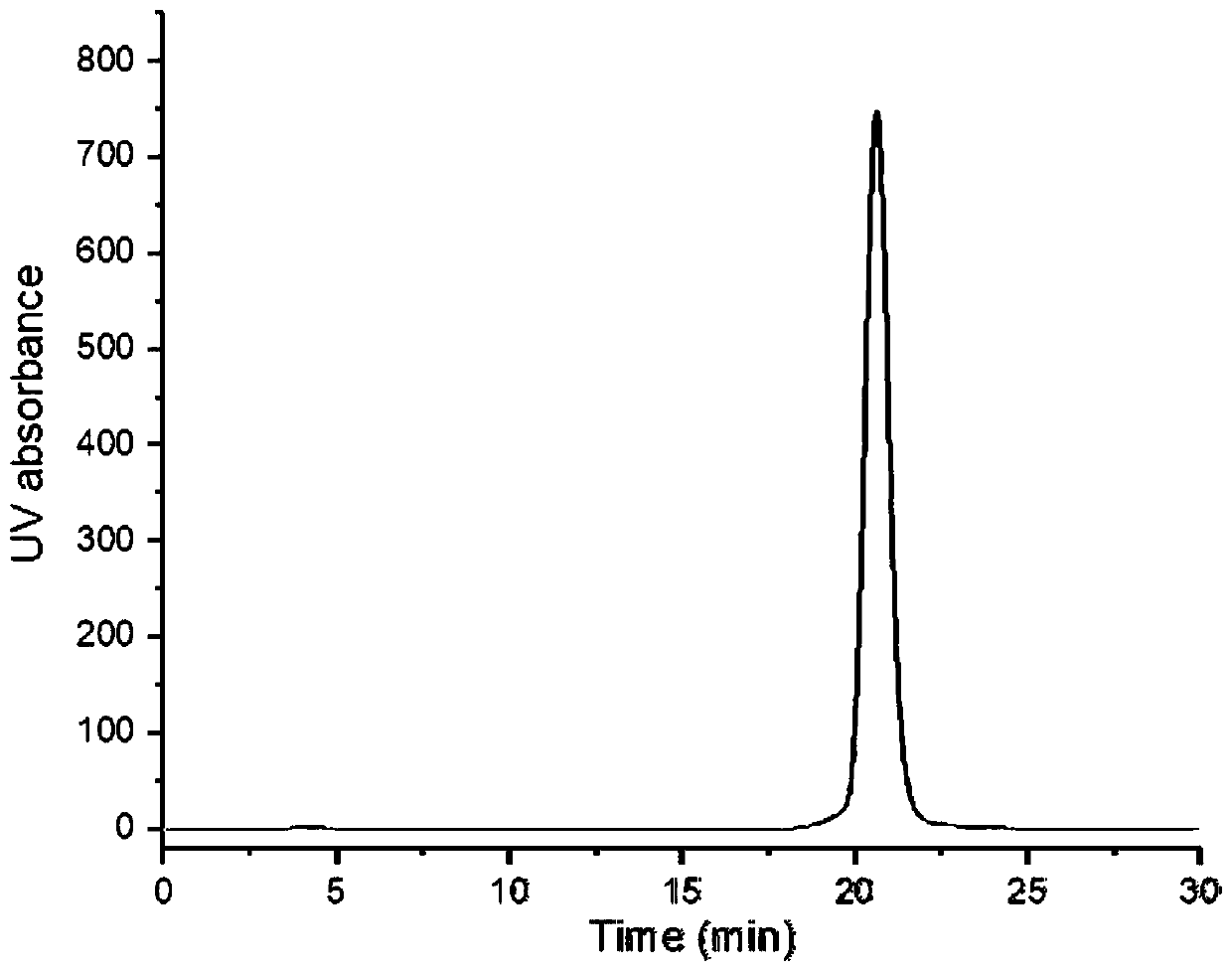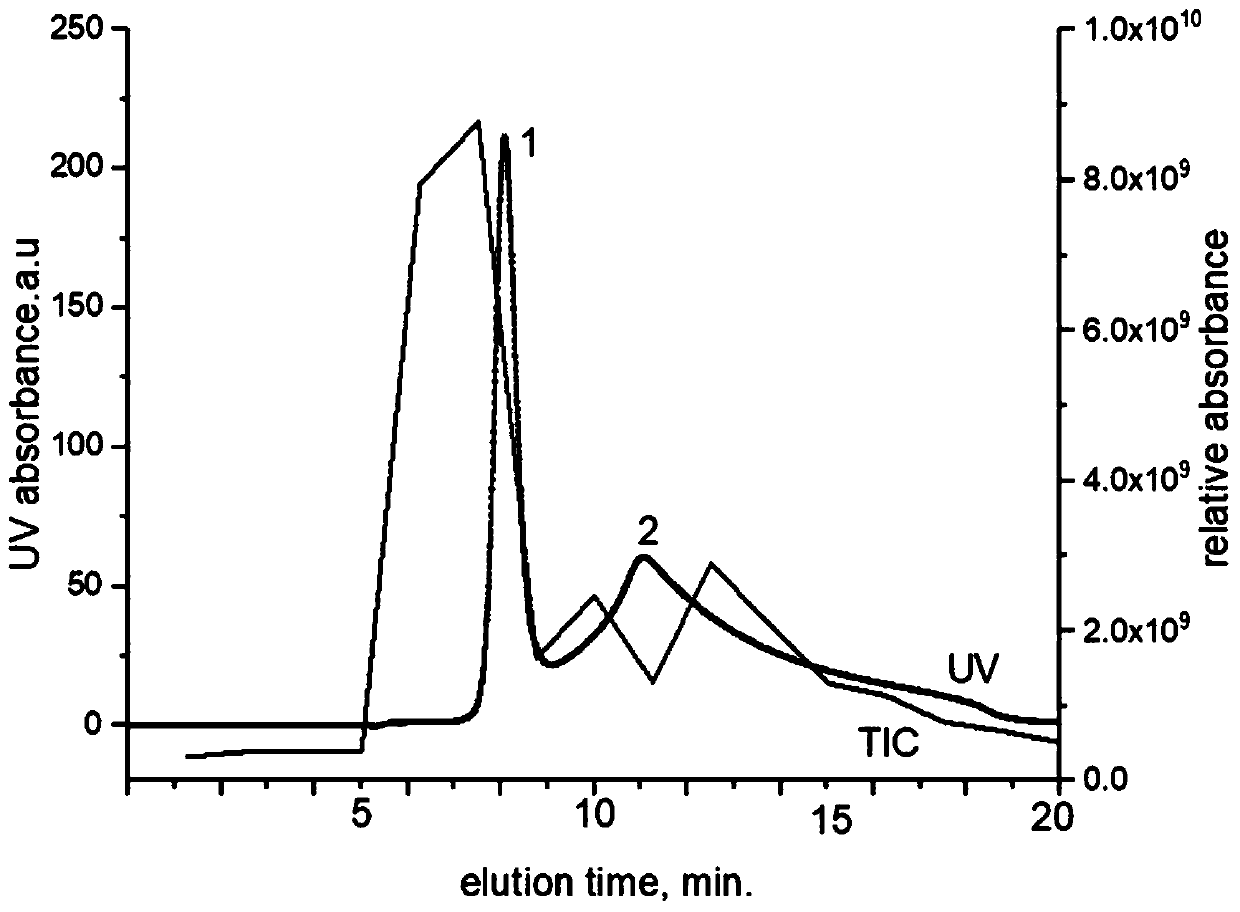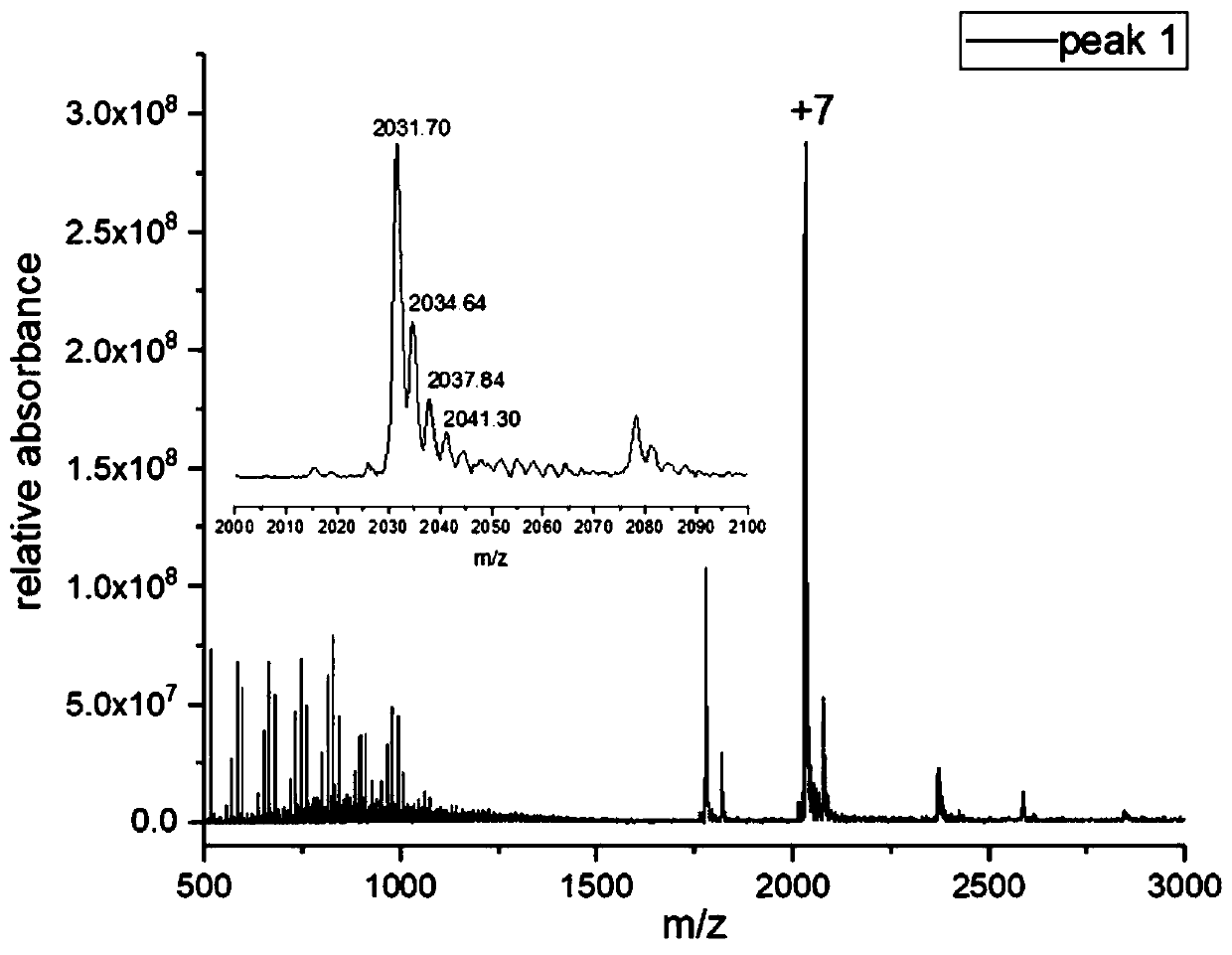Method for rapidly detecting protein isomers
A protein and isomer technology, applied in the field of protein separation and purification, can solve the problems of complicated detection and analysis, increased analysis time, inability to distinguish isomers, etc., to achieve rapid separation and identification, the method is convenient and simple, and highly practical effect of value
- Summary
- Abstract
- Description
- Claims
- Application Information
AI Technical Summary
Problems solved by technology
Method used
Image
Examples
Embodiment 1
[0020] This embodiment discloses a method for rapidly detecting protein isomers. Taking α-lactalbumin as an example, the specific steps are:
[0021] 1. Purification of α-lactalbumin: Equilibrate a size exclusion chromatography (SEC) column (TSKgel G3000SWXL, Tosoh, Japan) with 50mM ammonium acetate solution, and then dissolve α-lactalbumin in 50mM ammonium acetate solution In, filtering with a 0.22 μm filter and then injecting into high performance liquid chromatography (HPLC). The setting parameters are: detection wavelength 280nm, flow rate 0.75mL / min, time 20min. Finally, collect the protein solution of each elution peak for later use.
[0022] 2. Mass spectrometry identification of α-lactalbumin isomers: Undecafluorohexanoic acid was used to calibrate the Fourier transform ion cyclotron resonance-Mass Spectrometry (FTICR-MS), and then the HPLC Connected to the mass spectrometer, equilibrate the ion exchange chromatography (IXC) column (ProPac SAX-10, Thermo Fisher Scientific...
Embodiment 2
[0025] This embodiment discloses a method for rapidly detecting protein isomers. Taking β-lactoglobulin as an example, the specific steps are:
[0026] 1. Purification of β-lactoglobulin: Equilibrate a size exclusion chromatography (SEC) column (TSKgel G3000SWXL, Tosoh, Japan) with 50mM ammonium acetate solution, and then dissolve β-lactoglobulin in 50mM acetic acid The ammonium solution was filtered with a 0.22 μm filter and then injected into high performance liquid chromatography (HPLC). The setting parameters are: detection wavelength 280nm, flow rate 0.75mL / min, time 20min. Finally, collect the protein solution of each elution peak for later use.
[0027] 2. Mass spectrometric identification of β-lactoglobulin isomers: Fourier transform ion cyclotron resonance-Mass Spectrometry (FTICR-MS) was calibrated with undecafluorohexanoic acid, and then The HPLC was connected to the mass spectrometer, and the ion exchange chromatography (IXC) column (ProPac SAX-10, Thermo Fisher Scien...
PUM
 Login to View More
Login to View More Abstract
Description
Claims
Application Information
 Login to View More
Login to View More - R&D
- Intellectual Property
- Life Sciences
- Materials
- Tech Scout
- Unparalleled Data Quality
- Higher Quality Content
- 60% Fewer Hallucinations
Browse by: Latest US Patents, China's latest patents, Technical Efficacy Thesaurus, Application Domain, Technology Topic, Popular Technical Reports.
© 2025 PatSnap. All rights reserved.Legal|Privacy policy|Modern Slavery Act Transparency Statement|Sitemap|About US| Contact US: help@patsnap.com



